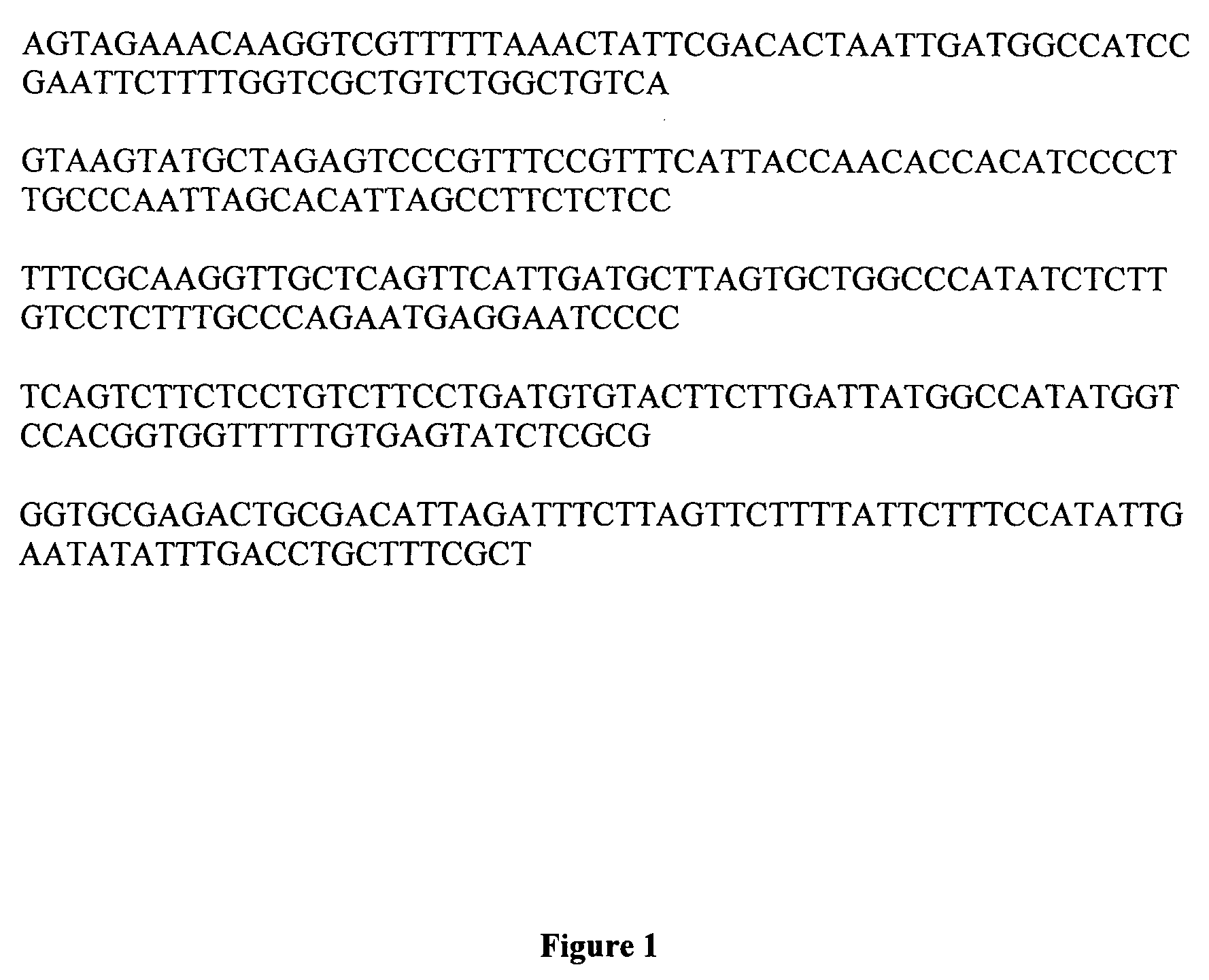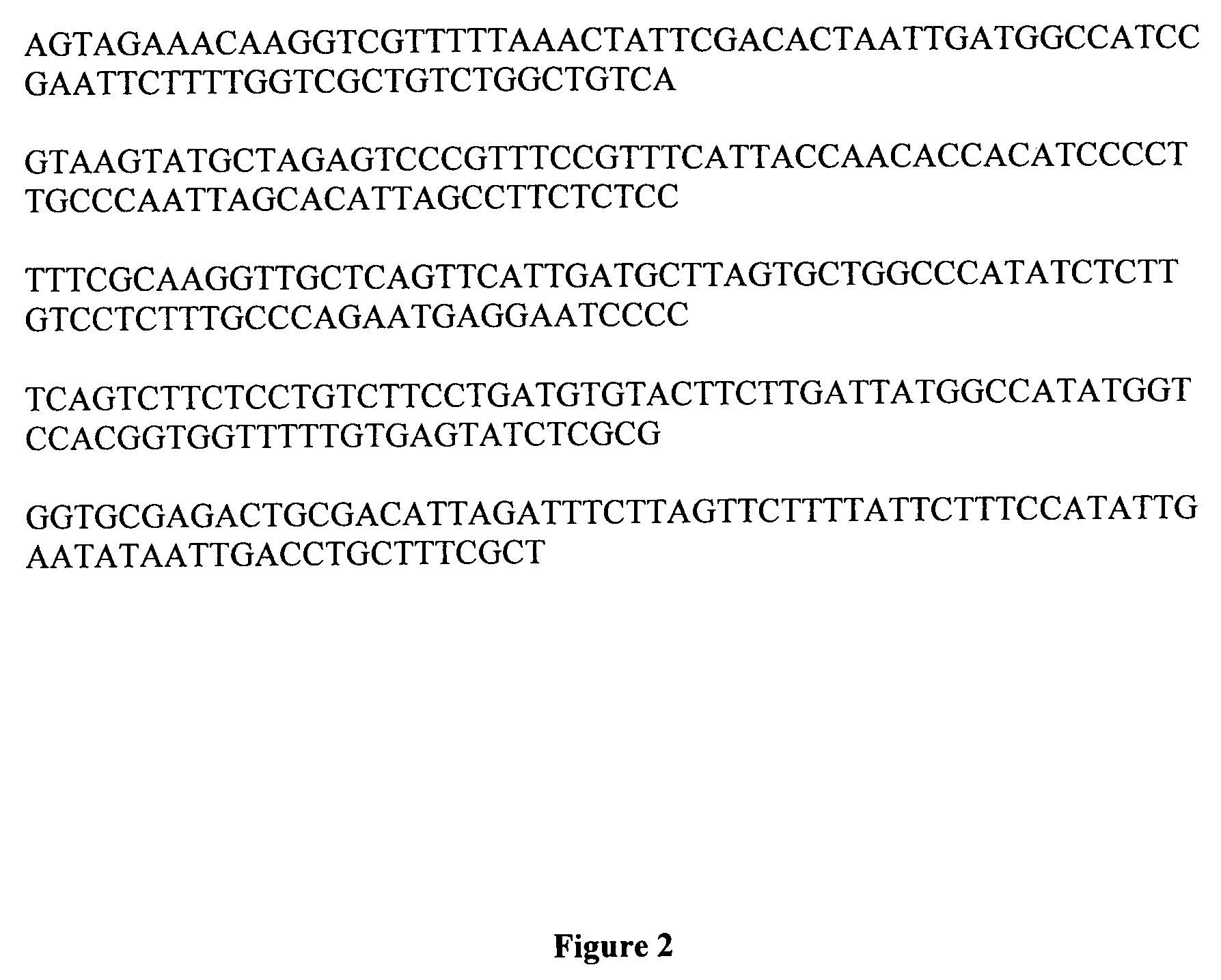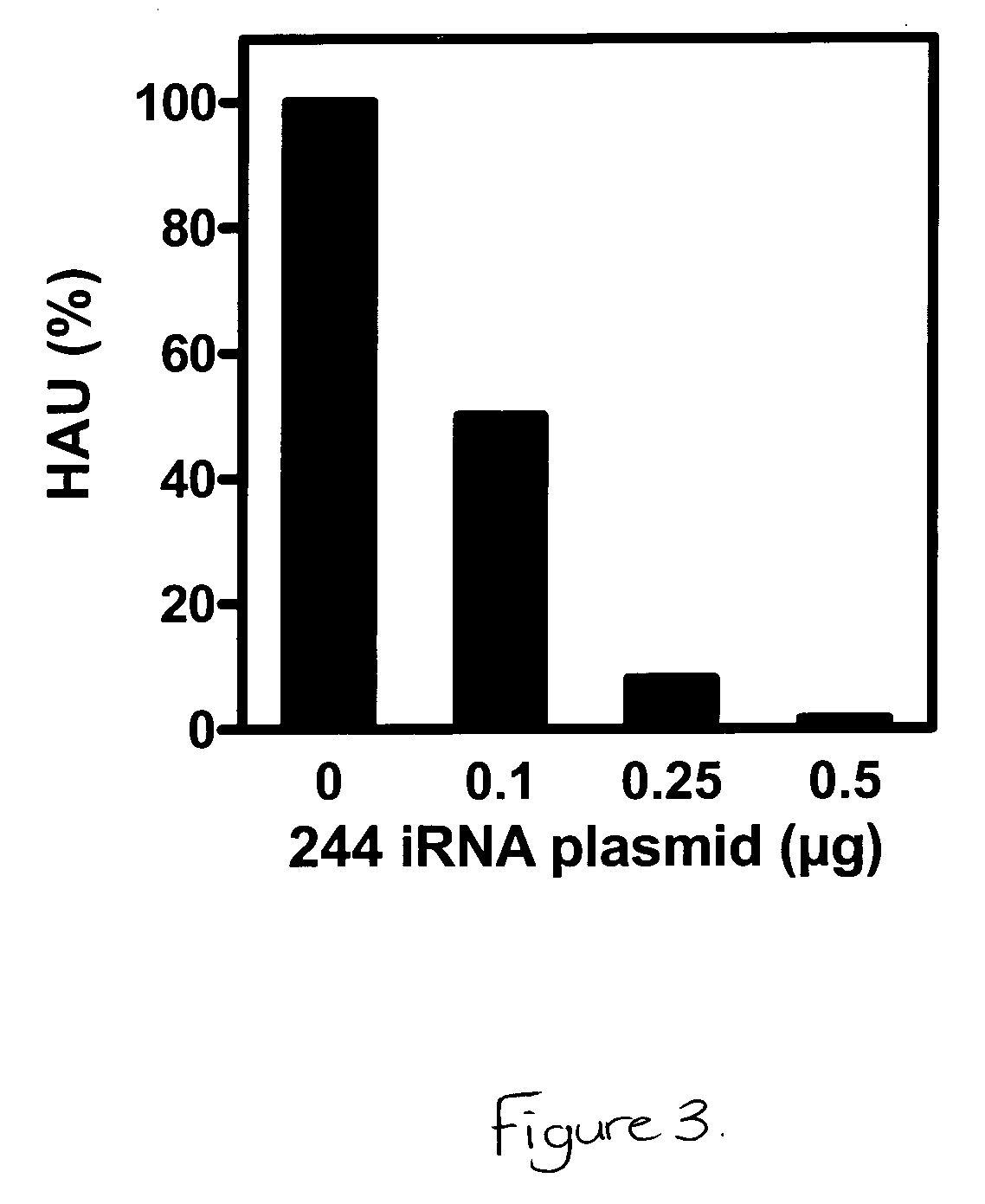Cloned defective interfering influenza A virus
a defective, virus technology, applied in the field of virology and the prevention and/or treatment of viral infections, can solve the problems of alarmingly high fatality rate, no virus currently transmits effectively from person to person, and subclinical gut infections, and achieve the effect of slowing down the progress of new infections, fast reproduction rate, and fast ra
- Summary
- Abstract
- Description
- Claims
- Application Information
AI Technical Summary
Benefits of technology
Problems solved by technology
Method used
Image
Examples
example 1
Production of Cloned DI Virus 220 / PR8
[0238]Previous work known in the art teaches that the production of DI virus is optimal when embryonated hens' eggs are inoculated with large amounts of inoculum (e.g. up to 2 ml per egg). The explanation given is that cells in which non-infectious DI virus reside also need to receive infectious (helper) virus, so that the former can be replicated. Furthermore, the amount of DI virus present normally increases when the passage is repeated a second or third time. Eventually, the amount of DI virus generated exceeds the amount of infectious virus present, there is a lack of helper virus function, and total virus production declines.
[0239]Unexpectedly, it was found that by the inventor that inoculating embryonated chicken's eggs with routine, i.e. standard amounts of cloned DI influenza A virus fails to yield the expected quantities of DI virus material; so much so, that it is an impediment to further laboratory studies, including animal studies in ...
example 2
Generation of Protecting Virus 244 / PR8
[0254]The principal protecting RNA used (segment 1; RNA244) arose spontaneously during the transfection / cocultivation of plasmids encoding infectious A / PR / 8 / 34 (Subbarao, K. et al 2003 Virology 305: 192-200). The DNA mix transfected into 293T cells contained 0.5 μg of each of the 8 A / PR8 gene segment (under Poll promoters), 0.5 μg each PB1 and PB2 expression plasmids, 0.1 μg PA expression plasmid, and 1 μg NP expression plasmid, and Fugene (Roche).
[0255]In order to optimize the transfection of the 244 iRNA plasmid, the 244 RNA was cloned into the Poll expression plasmid pPOLI-SapIT (Subbarao (2003) supra), so that a vRNA-sense transcript was expressed. Varying amounts of the 244 plasmid (0-0.5 μg) were transfected into 293T cells as described above. After 24 h, the 293T cells were trypsinized, mixed with MDCK cells and re-plated. After 7 days culture supernatants were harvested, and virus yield determined by HA assay.
[0256]In another experiment ...
example 3
Production of Cloned DI Virus 244 / 151PR8
[0258]Allantoic fluid (10 μl / egg) was injected into the allantoic cavity of fertile hen's eggs to make a stock of DI virus. Eggs were incubated at 33° C. for 48 h, and then chilled at 4° C. to kill the embryo. Allantoic fluid was then removed, and tested for HA activity. Virus was purified by differential centrifugation at 4° C. Removal of large debris was by ‘low-speed’ centrifugation (3000 rpm for 10 min in the swing-out rotor of a Beckman GS-6R centrifuge). This was followed by pelleting virus 26000 rpm g for 2 h in a Beckman SW28 rotor) through a 5 ml cushion of sucrose (10% w / v in Tris-buffered saline pH 7.4) to separate virus from smaller contaminants. Low density lipid-containing material (e.g. egg yolk) is retained on the sucrose. The HA of the virus was then titrated and adjusted to 2×105 HAU / ml. This was stored in aliquots in liquid nitrogen or at −70° C.
[0259]Table 3 below shows results for the production of cloned DI virus 244 / 151P...
PUM
| Property | Measurement | Unit |
|---|---|---|
| volume | aaaaa | aaaaa |
| volume | aaaaa | aaaaa |
| volume | aaaaa | aaaaa |
Abstract
Description
Claims
Application Information
 Login to View More
Login to View More - R&D
- Intellectual Property
- Life Sciences
- Materials
- Tech Scout
- Unparalleled Data Quality
- Higher Quality Content
- 60% Fewer Hallucinations
Browse by: Latest US Patents, China's latest patents, Technical Efficacy Thesaurus, Application Domain, Technology Topic, Popular Technical Reports.
© 2025 PatSnap. All rights reserved.Legal|Privacy policy|Modern Slavery Act Transparency Statement|Sitemap|About US| Contact US: help@patsnap.com



